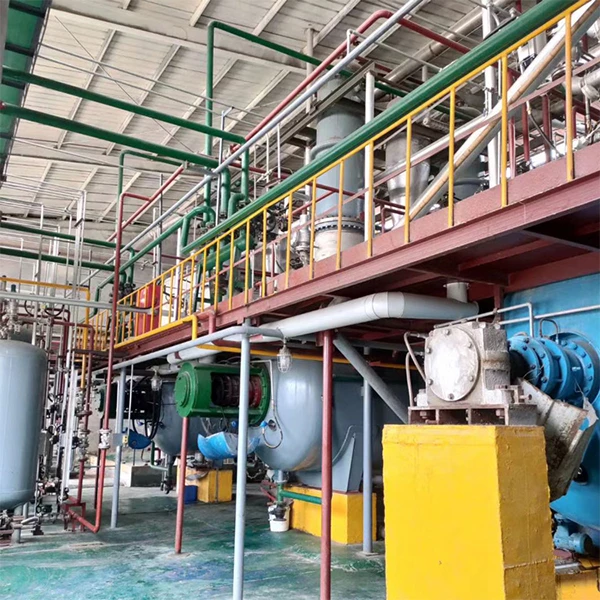Understanding Cellulose Ether and Its Applications in China
Cellulose ether, a derivative of cellulose, has emerged as a crucial substance in various industries, ranging from pharmaceuticals to construction. As a versatile material, cellulose ether is primarily known for its thickening, gelling, and film-forming properties, making it an invaluable ingredient in numerous applications. In recent years, China has become one of the leading producers and consumers of cellulose ethers, significantly contributing to its global market.
What is Cellulose Ether?
Cellulose ethers are created by chemically modifying cellulose, which is a natural polymer derived from plant cell walls. The modification process typically involves the etherification of hydroxyl groups present in cellulose. This transformation results in products such as methylcellulose, hydroxypropyl methylcellulose (HPMC), and carboxymethyl cellulose (CMC). Each type of cellulose ether has distinct properties and applications, making them suitable for various industrial uses.
The Rise of Cellulose Ether Production in China
China's production of cellulose ethers has seen substantial growth, primarily due to the country's booming industrial sector. The demand for cellulose ether in China can be attributed to the ongoing expansion of industries such as pharmaceuticals, food and beverages, construction, and personal care. The Chinese government’s initiatives to promote the use of sustainable and eco-friendly materials have also fueled the growth of cellulose ether production.
The construction sector, in particular, has significantly benefited from cellulose ethers. Their water-retention capabilities and thickening properties make them essential in cement and mortar applications. When added to construction materials, cellulose ethers enhance workability, improve adhesion, and increase the lifespan of the finished products. As urbanization continues to rise in China, the demand for high-quality construction materials enriched with cellulose ether is likely to escalate.
Applications of Cellulose Ether
1. Pharmaceuticals In the pharmaceutical industry, cellulose ethers serve as excipients in drug formulations. Their ability to control the release of active ingredients makes them indispensable in creating sustained-release medications. Additionally, their non-toxic nature and compatibility with various chemicals ensure their safety for end-users.
china cellulose ether

2. Food Industry In food processing, cellulose ethers function as thickening agents, stabilizers, and emulsifiers. They help maintain the desired texture and consistency in sauces, dressings, and dairy products. Moreover, their ability to retain moisture extends the shelf life of food products, which is highly valued in the market.
3. Personal Care Products Cellulose ethers are also widely used in cosmetic and personal care formulations. They contribute to the viscosity and stability of lotions, creams, and gels, ensuring a pleasant user experience. Additionally, their film-forming properties make them suitable for hair care products, providing hold and structure.
4. Environmental Applications With the increasing focus on sustainability, cellulose ethers are being utilized in environmentally friendly applications. They are used in water-based paints and coatings, providing excellent performance while minimizing environmental impact. Their biocompatibility makes them suitable for various eco-friendly formulations, aligning with the global shift towards greener products.
Challenges and Future Prospects
Despite the numerous benefits and wide-ranging applications of cellulose ether, there are challenges ahead. The market faces pressure from fluctuating raw material prices and competition from synthetic alternatives. Moreover, ensuring quality and consistency in production is paramount for maintaining market trust.
Looking forward, the cellulose ether market in China is poised for growth. Innovations in production methods and the introduction of new derivatives will likely enhance performance characteristics and broaden the application spectrum. As consumer preferences shift towards natural and sustainable products, the demand for cellulose ethers will continue to rise, making it a cornerstone of many industries.
Conclusion
Cellulose ether is a versatile and essential compound driving various sectors in China. Its applications in pharmaceuticals, food, personal care, and construction highlight its significance in modern manufacturing processes. As production methodologies evolve and sustainability becomes a central theme, cellulose ether is set to play an increasingly integral role in the industrial landscape, benefiting both consumers and manufacturers alike. The future holds great promise for cellulose ether, and its potential is just beginning to be realized in the dynamic Chinese market.
-
The Application and Significance of Construction RdpNewsMay.19,2025
-
Industrial Grade HpmcNewsMay.19,2025
-
Building Coating Adhesive Building Coating Adhesive HpmcNewsMay.19,2025
-
Application Of Hpmc For Detergent For Detergent In DetergentsNewsMay.19,2025
-
Application Of Hpmc Cellulose In Cement-Based MaterialsNewsMay.19,2025
-
Application Of High Quality Hpmc For Construction In The Field Of ConstructionNewsMay.19,2025




